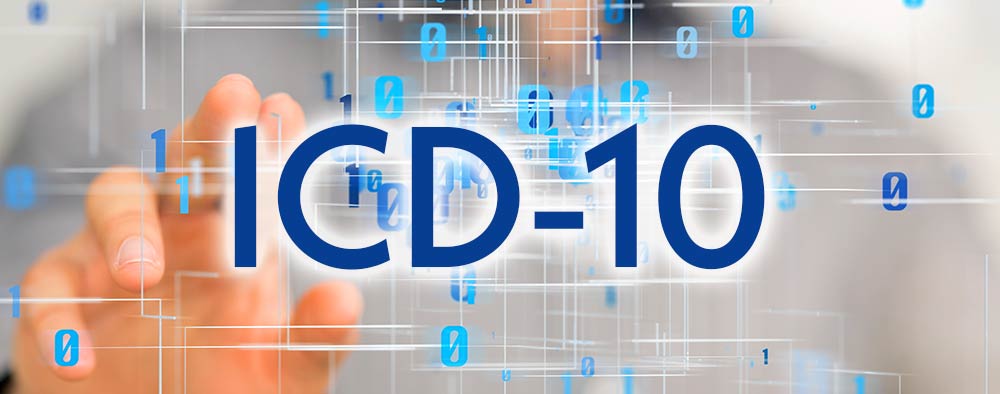by Mario Fucinari •
DC, CPCO, CPPM •
Whether you have a cash practice, personal injury, or a hybrid practice, you must keep up with the yearly diagnosis changes. Every year, the ICD-10 diagnosis codes are updated by the World Health Organization (WHO) and the Centers for Medicare and Medicaid Services (CMS). The code updates frequently include additions, deletions, and modifications. The changes occur on a fiscal year basis; therefore, the ICD-10 codes 2024 go into effect on October 1, 2023.
The ICD-10-CM (clinical modifications) encompass the codes that apply to your office. For the fiscal year 2024, there are 395 new codes, 22 revised codes, and no deletions. There are several different subspecialties in chiropractic. As such, some offices may use codes such as Parkinson’s disease, endocrine, and metabolic disorders. Although these codes have changed for 2024, we will not be looking into those codes in this article.
Every year, codes continue to become more specific. As anyone who has tried to assemble an Ikea dresser, it is crucial to read the instruction manual first. Each year, WHO and CMS continue to emphasize that it is essential that every provider codes to the highest level of specificity. Only in the United States do the codes we choose determine the number of treatments approved for patient care. Diagnosis codes such as cervicalgia are outdated and should be avoided. Signs and symptoms codes are only used if that is all the doctor knows. You should ask yourself, why do they have neck pain? For example, if your answer is degenerative disc disease (DDD), the more specific diagnosis code would be DDD.
The following are highlights of the ICD-10 code changes for 2024. Remember, these are just highlights of changes and not all-inclusive. Also, remember that these code changes are effective on October 1, 2023.
Chapter 5 – Mental, Behavioral, and Neurodevelopmental Disorders (F01 – F99)
New guidance on the use of the F05 codes, delirium due to a known physiological condition, you must Code First the underlying physiological condition, such as
Example: Add: dementia (F03.9-)
Chapter 6 – Diseases of the Nervous System (G00-G99) contains new subcategories and codes for reporting chronic migraine headaches and differentiating whether the pain is manageable or not.
| G43.1 | Migraine with aura |
| Excludes1 chronic migraine with aura (G43.E-) | |
| NEW Subcategory | |
| G43.E- | Chronic migraine with aura |
| Excludes1: migraine with aura (G43.1-) | |
| New Codes | |
| G43.E0 | Chronic migraine with aura, not intractable |
| -Chronic migraine with aura, not intractable, with status migrainosus | |
| G43.E01 | Chronic migraine with aura, not intractable, with status migrainosus |
| G43.E09 | Chronic migraine with aura, not intractable, without status migrainosus |
| -Chronic migraine with aura NOS |
Chapter 13 – Diseases of the Musculoskeletal System and Connective Tissue (M00-M99) contains 42 new codes to help further define osteoporosis with pathological fracture.
| Subcategory | |
| M80.0 | Age-related osteoporosis with current pathological fracture |
| New Codes | |
| M80.0B | Age-related osteoporosis with current pathological fracture, pelvis |
| M80.0B1 | Age-related osteoporosis with current pathological fracture, right pelvis |
| M80.0B2 | Age-related osteoporosis with current pathological fracture, left pelvis |
| M80.0B9 | Age-related osteoporosis with current pathological fracture, unspecified pelvis |
| M80.0B | Age-related osteoporosis with current pathological fracture, pelvis |
| Subcategory | |
| M80.8 | Other osteoporosis with current pathological fracture |
| New Codes | |
| M80.0B | Other osteoporosis with current pathological fracture, pelvis |
| M80.0B1 | Other osteoporosis with current pathological fracture, right pelvis |
| M80.0B2 | Other osteoporosis with current pathological fracture, left pelvis |
| M80.0B9 | Other osteoporosis with current pathological fracture, unspecified pelvis |
As any parent knows, kids (and adults) will do the darndest things. Apparently, CMS agrees. Many changes have occurred in Chapter 20 – External Causes of Morbidity (V00 – Y99), which contains nearly half of all the new codes. If used properly, the External Cause codes will supply information on how the injury occurred, whether it was due to a work injury or an auto accident, and what the patient was doing at the time of the injury. These codes are helpful and often are required in personal injury cases, worker’s compensation cases, and insurance companies who send out annoying questionnaires to patients asking about their injuries. To put a stop to questionnaires, start using External Cause codes.
A new category was added in the External Cause Codes section, W44 Foreign body entering into or through a natural orifice.
| Category | |
| W44 | Foreign body entering into or through a natural orifice Excludes2: contact with other sharp objects (W26) and contact with sharp glass (W35) |
| New Codes | |
| W44.A | Battery entering into or through a natural orifice |
| -W44.A0 | Battery unspecified, entering into or through a natural orifice |
| -W44.A1 | Button battery entering into or through a natural orifice |
| -W44.A9 | Other batteries entering into or through a natural orifice -Cylindrical battery |
Other examples of the increased specificity of how injuries occur include e-bikes and other sharp objects. As an example, W44.H1 Needle entering into or through a natural orifice includes classifications of darts, hypodermic needles, safety pins, or a sewing needle.
As micromobility products such as e-scooters, hoverboards, and e-bikes increase in popularity, so do the injuries. Many are riding e-bikes without proper training or equipment. Patients with e-bike accidents had a higher incidence of moderate traumatic brain injuries than those with pedal bicycle accidents.
New codes have been added to specify:
- Was the patient a driver, passenger, or unspecified rider in the accident?
- Was the patient in transit or getting on or off the bike?
- Did the collision occur with a pedestrian, animal, two-or-three wheeled motor vehicle, pedal cycle, or other vehicle such as a car, bus, railway train, or a fixed object?
An example of these codes includes:
V28.31 Person boarding or alighting an electric assisted bicycle injured in a noncollision transport accident.
These are just the highlights of the many codes that may affect your practice. For a complete list of the ICD-10 code changes:
https://www.cms.gov/files/zip/2024-code-descriptions-tabular-order-updated-06/29/2023.zip
About the author
Dr. Mario Fucinari is a Certified Professional Compliance Officer, Certified Physician Practice Manager, Certified Insurance Consultant, and a Medicare Carrier Advisory Committee member. He is the author of several reference books, including ICD-10 Coding of the Top 100 Conditions for the Chiropractic Office – Eleventh Edition (2024). For further information, check his website at www.Askmario.com Dr. Fucinari travels throughout the year to speak to audiences nationwide, sharing his chiropractic expertise and insights about documentation, billing, and coding. He is a member of the ChiroHealthUSA Speaker’s Bureau. To contact Dr. Fucinari or to have him speak to your group, contact ChiroHealthUSA, or you may email him at doc@skmario.com.










 ▶︎
▶︎  Why is the Discount Challenge prize amount $15,024? Because that is the average “per-occurrence” fine for Medicare inducements. That’s not $15,024 per patient, that’s not per provider, that’s PER VISIT. Stinks, doesn’t it? To us, the prize amount is worth the investment if we can help our profession better understand proper discounting.
Why is the Discount Challenge prize amount $15,024? Because that is the average “per-occurrence” fine for Medicare inducements. That’s not $15,024 per patient, that’s not per provider, that’s PER VISIT. Stinks, doesn’t it? To us, the prize amount is worth the investment if we can help our profession better understand proper discounting.